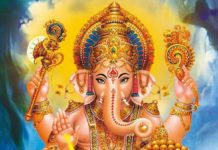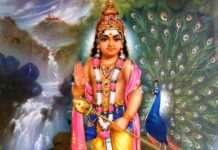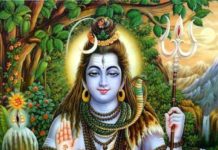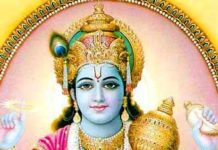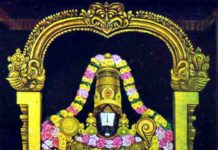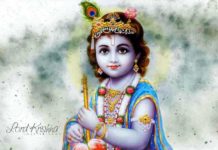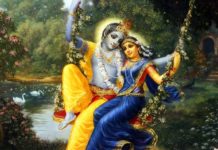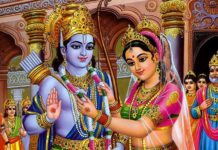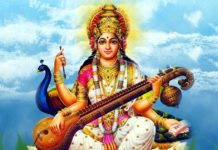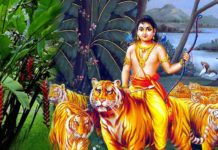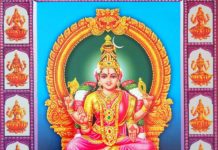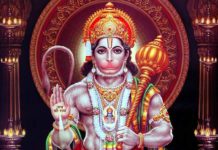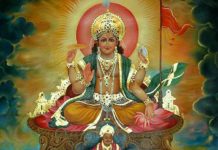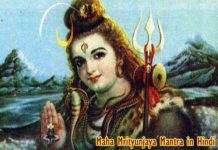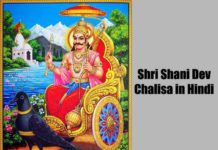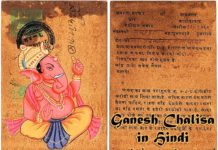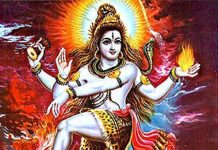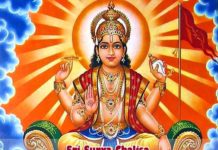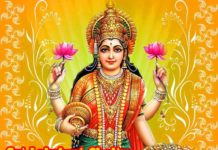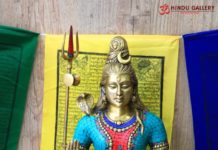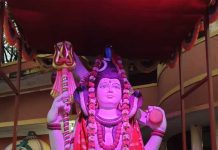Sri Sobha Kiruthu is the new year as per Hindu Calendar. The Hindu Calendar has sixty years each with a name and significance.
Some regions of India consider only Solar calendar to ascertain the run of a year; The other regions consider only the luni-solar calendar for the purpose. Hence there are two versions of Hindu new year celebrations.
Similarly, even rituals like marriage, Gruha Pravesh etc., are conducted only at nights in certain regions and only at day time in the other regions. This difference also occurs due to the following of the respective calendars (solar / luni-solar).
Sri Sobha Kiruthu and all the years as per Hindu Calendar commence with Chaitra month. The dawn of Chaitra is considered as the new year day. It is celebrated in different names in different regions. The rituals are also different.
However, there are common elements such as special prayer and worship to God, visiting temples, doing special poojas, wearing new dresses, getting blessings from the elders and partaking of food with family and friends with special dishes. Reading of almanac or panchangam denoting the prospects and goodness of the new year is also a predominant feature of the festivities.
The synopsis of the festivities across a few regions of India with respect to the celebration of Hindu New Year Sri Sobha Kiruthu is given in this narrative.
Vishu
The festival occurs on Aswini, the first star. It is believed that Sun comes above the equator on this day. All auspicious items such as money, gold, fruits, flowers etc., are kept before a mirror.
The belief is that the wealth would multiply as much as the reflections. Elders gift money to the youngsters in the family.

Vishu Sadhya comprising of Vishu Kanji, Thoran and Vishu Katta constitute the special feast for the day. Visiting temples, having darshan of Gods / Goddesses and doing archana are invariably done.
Vishu is on Saturday, 15th April 2023.
Naba Barsho
The festival is celebrated as Naba Barsho / Pahela Baisakh in Bengal. This is the first day of Baisakh month. The celebration is marked by processions, fairs and family get-togethers.
The houses are cleaned and rangolis are drawn. In the centre of the house, a mud pot filled with water is put on a Rangoli, topped with mango leaves and marked with the swastika symbol in white and red.

Sri Ganesha and Sri Lakshmi are specially worshipped. Women put sindhoor on each other’s forehead as a mark of respect. Youngsters seek the blessings of elders. Sweets and confectionaries are gifted across.
Shuvo Nabo Barsho is celebrated on Saturday, 15th April 2023.
Puthaandu
In Tamil speaking regions, the Hindu New Year is called as “Varusha Pirappu” or “Thamizh Puthandu” or “Puthu Varusha Pirappu”.
Special rangoli / kolams are drawn in front of the house. Smearing of ‘’Kaavi”, the paste of red stone around the kolam is considered auspicious. The entrance of the house is decorated with mango leaves and palm leaves (thoranam).

Payasam and Vada are the special dishes made for the day. Visiting temples, having darshan of Gods / Goddesses and doing archana are invariably done.
Thamizh Puthandu is on Friday, 14th April 2023.
Pana Sankranthi
This is the first day of the solar month Mesha. It is celebrated as Pana Sankranti / Maha Bisuba Sankranti in Orissa. It is also considered as the birthday of Lord Hanuman.
People take holy dip in rivers and visit Shiv, Shakthi and Hanuman temples. Community fairs and street dances are held.
The main event is the daring walk on the surface of burning coals by the volunteers cheered by the onlookers with song and dance.

There is a dance named Danda Nata whereby the performers take dip in the village ponds, walk over the bed of burning coals and again get into the pond. This signifies liberation from pain.
Chariot yatras are held at the temples for a week. Group of 2 or 4 men wear feminine dresses and perform ‘’Jhama nata” dance. The special dish made for the occasion is Pana which is the combination of chilled sweet mango, milk, yogurt and coconut.
Pana Sankranthi is celebrated on Friday, 14th April 2023.
Baisakhi
It is celebrated as Vaisakhi / Baisakhi in Punjab. Baisakhi is celebrated as Sikh new year which denotes the formation of Khalsa panth of warriors by Guru Gobind Singh in 1699.
On this day, Gurudwaras are decorated, people take holy dip in rivers & ponds, visit Gurudwaras and hold kirtans.

Hindus in Punjab celebrate this day as harvest festival, they take holy dip in rivers, visit temples, do prayers and partake special foods.
Baisakhi is celebrated on Friday, 14th April 2023.
Rangoli Bihu
The festival is celebrated as Rongali Bihu / Bohag Bihu / Xaat Bihu in Assam. ‘Bohag’ means Bhaskar (solar) calendar. It is celebrated as harvest festival for 7 days after Vishuva Sankranti in the month of Vaisakh. There are 7 phases of rituals as mentioned below:
Raati Bihu: Commences on the first night of Chot month and is observed upto Uruka, which is the formal day of Rongali Bihu. It is observed either under an old tree or in the open ground with torches.
In chowdang villages local women gather and men play instruments such as pepa (hornpipe) and bholuka baanhor toka, the split bamboo instrument.

Chot Bihu: Called also as Bali Husori, this is observed on the second day of Chot month. Outdoor dances are performed till the occurrence of Uruka.
Goru Bihu: This is the last day of Chot month and first day of Rongali Bihu. This is dedicated for the respect and reverence to the livestock which help in agriculture. The cattle are brought to the water bodies, washed with herbs and fed vegetables.
The passage “Dighloti dighal paat, maakhi marru jaat jaat; lau khaa bengena khaa, bosore bosore bardhi jaa, maare xaru baapere xoru toi hobi bor bor goru” is recited the meaning being “we drive away the pests from you using the herbs and dighoti (a plant with long leaves); we pray to you to accept our offer of brinjals and gourds which keep growing every year; may you outgrow your parents”.
The herbs and leaves are also hung in the roof and entrance of the cattle sheds. After the recital and wash, the cattle are fed.
Games such as exho ebidh haak (collecting 101 types of vegetables), gathering amlori tup (larvae of weaver ant), binding of betal leaf plants, planting bamboo roots and such other farm based games.
Occasionally, competitions are organized for food (Kori Khel, Paakha Khel and koni-juj). In the evening, cattle are decorated and taken back to the ranches. At night, rice bran is burnt.
Manuh Bihu: This is the first day of Vaisakh month and denotes respect to elders. People take special Maah Halodi bath, wear new dresses and seek the blessings of the elders in the family.
A piece of cloth named Bihuvan or Gamusa is handcrafted with intricate details and is considered as the cultural pride of Assam.
Kutum Bihu: This is the second day of Vaisakh and is dedicated for the social gathering with friends and family for lunch.
Mela Bihu: This is the third day of Vaisakh and is dedicated for conducting outdoor games and fairs for the merriment of the community.
Chera Bihu / Bohagi Bidai / Phato Bihu is the final day of Rongali Bihu and this day is dedicated for taking new year resolutions and exchange of a dish named ‘pitha’ amongst families and friends.
The Rangoli Bihu is celebrated from Friday, 14th April 2023 to Thursday, 20th April 2023.
Ugadhi
In the Telugu regions, the festival is called as Ugadhi. It means the commemoration of the beginning of Kaliyug. It is also called as Samvathsaradhi which means “beginning of the year”.
Special rangoli / muggulu are drawn in front of the house. The entrance of the house is decked up with mango leaves and palm leaves.

Bobbatlu, the sweet dish made of jaggery and coconut is made. However, the Ugadhi Pachadi made of tamarind, mango, neem flower, chilli, jaggery and salt signifying the combination of six types of tastes such as salt, hot, sour, sweet, tangy and bitterness is prominent. Other dishes such as Garalu (Vada) and Pulihara (tamarind rice) are also made.
Visiting temples, having darshan of Gods / Goddesses and doing archana are invariably done.
Ugadhi is on Wednesday, 22nd March 2023.
Yugadhi
Similar to Ugadhi, Yugadhi also means the commemoration of the beginning of Kaliyug.
Special rangoils are drawn in front of the house. The entrance of the house is decked up with mango and palm leaves.

Special dishes such as Poli, Vada and Payasam are made. Visiting temples, having darshan of Gods / Goddesses and doing archana are invariably done.
Yugadhi is on Wednesday, 22nd March 2023.
Gudi Padava
The festival is observed as Gudi Padava by Marathi people. It is considered as celebration of victory of Sri Rama over Ravana. It is also considered as celebration of harvest of rabi crops.
The houses are decorated with Thoran and Rangoli. A special gudi flag is made in yellow / red colour and decorated with neem and mango leaves. A small pot made of copper or silver is kept upside down on the flag.

The gudi flag is believed to ward off evil. Sakkar Bhaat, Shrikhand, Puri and Puran Poli are the special dishes.
Visiting temples, having darshan of Gods / Goddesses and doing archana are invariably done.
Gudi Padava is on Wednesday, 22nd March 2023.
Sajubu Nongma Panba
The festival is celebrated as Sajubu Nongma Panba / Meetei Cheiraoba / Sajibu Cheiraoba in Manipur. It denotes the first day of the year.
The calendar is called Meitei Lunar. Raw rice, vegetables and fruits are offered to the God named Lainingthou Sanamahi who has derived his powers from all the Stars.

Only men of the house do the cooking while the ladies do the cleaning. Only even number of the dishes are prepared.
An area of 2×2 (feet) is cleared and sanctified with flowers at both the entrance and the rear of the house. The cooked food is offered to Gods in odd numbers at both the entrance and the rear.
Three Gods are worshipped, viz Kumsana Kumliklai (Lord of the golden year), Lamsenba Tusenba (Guardian of the Land) and Lammaba Tumaba (Lord of the land) at the sanctified area. Only the eldest son of the family does the offering.
It is believed that anything that happens on the new year day happens for the rest of the year. Hence the people feast with family and friends to retain the health and happiness.
After the feast, the family members climb small hillocks to pay respects to the hill deity. Prior to the day of festival, married women gift a piece of new cloth to their father and brothers as a custom.
Sajubu Nongma Panba is celebrated on Thursday, 23rd March 2023.
Cheti Chand
The festival is celebrated as Cheti Chand by Sindhi people. This is the second day of the Shukla Paksha and the moon is visible only on this day after the new moon day.
It is also observed as the birthday of Sri Uderolal, the Sindhi Saint who was also called as Sri Jhulelal.
As per the legend, the Sindhis were ruled by a tyrant King who had forced them to convert to the other religion. They all prayed to the river God for forty days. At the end of forty days, they heard a celestial voice which said that a divine child would be born in Nasarpur as son of Mata Devki to protect them. The child was named Uday Chand. Sri Jhulelal was that child. “Jhulelal” also means “swinging child”. The Child grew up, performed many miracles and cured lot of ill people. When the time came, Sri Jhulelal also confronted the tyrant. The tyrant was forced to admit his defeat. He then treated Sindhi Hindus respectfully.

Sri Jhuelal is considered as the incarnation of Sri Maha Vishnu. He is believed to have born with the blessings of God Varuna (the God of rain). Sri Jhulelal was said to be born in 10th Century.
The festival also heralds the arrival of spring. All the water bodies are respected and worshipped by way of special poojas with kalash. They carry oil lamps, sugar, cardamom and fruits to the river Sindhu and perform poojas. River Sindhu is in Pakisthan.
Cheti Chand / Jhulelal Jayanthi is celebrated on Wednesday, 22nd March 2023.
Chaitra Navrathri Puja
In some parts of North India, Chaitra Navratri Puja is celebrated for 9 days from the first day of the Hindu New Year. Sri Durgaa Maa is invoked for this festival.

The first day of the Chaitra Navrathri is considered to be the first day of origin of the universe. It is also the first day of the Hindi new year.
The festival commences with the keeping of the Kalash at the appropriate time. The idol / picture of Durga Maa is placed in the puja place. Special sweets are prepared and offered as Neivedyam and partaken. Some people observe fasting for a session.
A clay pot with soil is sown with seven types of grain seeds is put there. A kalash with pure water is put. The coconut is covered with red cloth. Betal leaves, Mango / Ashoka leaves, a few coins and the grass named Dhurva are offered in the puja.
The slokas / mantras pertaining to each avatar of Maa Durga are devoutly recited. Poojas are done daily.
It starts on Wednesday, 22nd March 2023 and ends on Thursday, 30th March 2023. The muhurat time for commencing and ending the Vrat should be ascertained from the respective regional calendar.

The Chaitra Navratri Vrat comprises of festivals such as Shailaputri Puja, Sindhoora Tooj, Brahmacharini Puja, Gowri Puja, Saubhagya Teej, Chandraganta Puja, Kushmanda Puja, Vinayaka Chathurthi, Lakshmi Panchami, Naag Puja, Skanda Mata Puja, Skanda Sashti, Kathyayani Puja, Yamuna Chauth, Maha Sapthami, Kala Rathri Puja, Durga Ashtami, Annapurna Ashtami, Mahagauri Puja, Sandhi Puja and Sri Rama Navami. It ends with Navaratri Parana on Friday, 31st March 2023.






